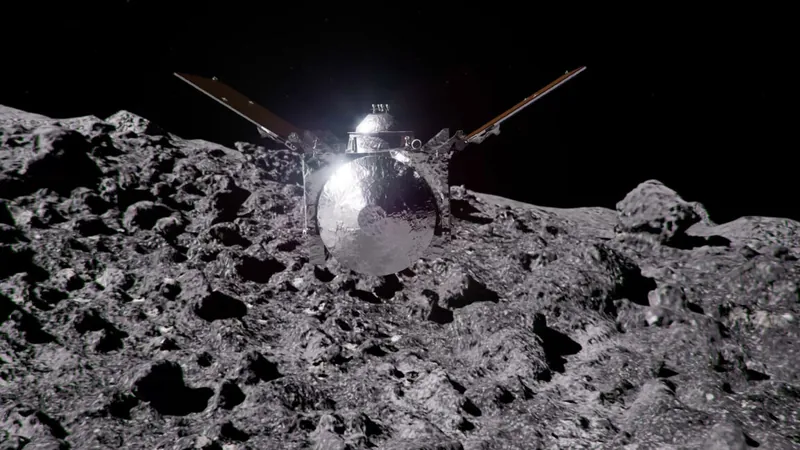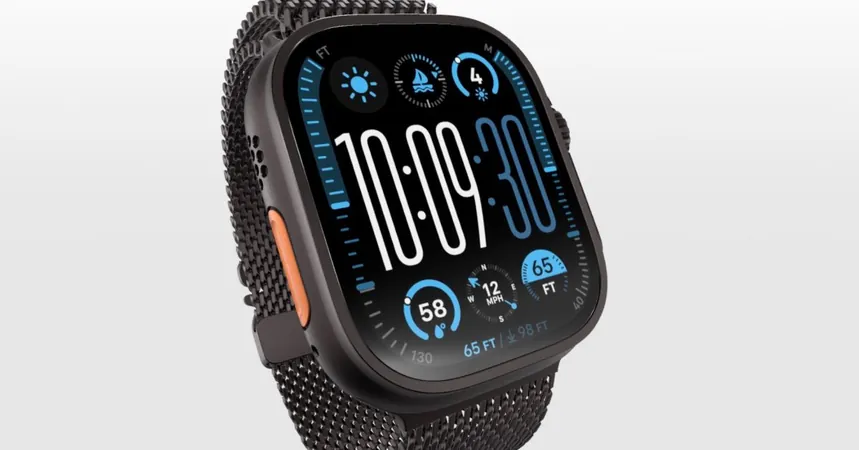
Epic Asteroid Close Call: Will NASA Miss the Chance of a Lifetime?
2025-06-27
Author: Lok
A Celestial Marvel Is Approaching!
Mark your calendars! In just under four years, the fearsome asteroid Apophis will soar perilously close to Earth, treating stargazers worldwide to a dazzling show as it lights up the night sky. This unprecedented flyby set for April 2029 will provide an extraordinary chance for scientists to explore this colossal space rock up close.
Why Apophis Matters
As Apophis swings by, its interaction with Earth’s gravity could unveil secrets hidden within its core. Understanding these features is crucial for planetary defense strategies; if a true threat ever hurtles toward our planet, knowing the asteroid’s internal makeup could help us devise a deflection plan.
Bobby Braun from Johns Hopkins Applied Physics Laboratory emphasized the historical significance of this event, stating, "This is an incredible opportunity—there won’t be another like it for thousands of years. We need this knowledge!" Yet, here lies the dilemma.
Is NASA Dropping the Ball?
Despite a golden chance, NASA may sit on the sidelines. The agency had ambitious plans to track Apophis via a mission called OSIRIS-Apex, but recent budget cuts from the Trump administration threaten to scrap it altogether. Alternatives like the Janus spacecraft and others have also been tossed aside or left in limbo.
Richard Binzel from MIT voiced concerns, urging, "The world is watching; NASA must step up!" But will they?
Planetary Defense—A Rocky Road
Public surveys consistently rank planetary defense at the forefront of NASA's priorities, yet the agency has lagged in action. Congressional mandates dating back to 2005 called for the detection of near-Earth objects, aiming to find 90% of threats by 2020—clearly a target missed.
In 2016, NASA established the Planetary Defense Coordination Office, but despite identifying over 26,000 near-Earth objects, resource limitations and competition for funds continue to hinder progress. Ed Lu, a former NASA astronaut, stresses a two-pronged approach: better threat detection and follow-up missions to validate deflection technologies.
All Eyes on Apophis
Discovered in 2004, Apophis, named after a villain from *Stargate SG-1*, is a hefty 370 meters wide. While it’s not large enough to obliterate civilization, its impact would be catastrophic on a regional scale rivaling the Tunguska event of 1908. It will pass by just 31,600 km (19,600 miles) from Earth on April 13, 2029—an encounter astronomers estimate happens only once every 7,500 years.
NASA’s Path Forward—Or Not?
The audacious idea of sending OSIRIS-Apex, which previously collected samples from another asteroid, to meet Apophis was a beacon of hope. However, funding cuts have left this mission hanging in the balance, raising the specter of losing a tremendous research opportunity. Congress holds the purse strings—and the power to decide Concerning support for this crucial mission.
Looking Beyond NASA
Fortunately, NASA isn't the only game in town. The European Space Agency is gearing up for its own mission, Ramses, designed to accompany Apophis as it glides past Earth. Meanwhile, Japan's JAXA aims to fly by the asteroid during a mission to another destination—but time is running out.
Innovative concepts, commercial missions, and philanthropy could potentially fill the gap should NASA falter. Private astronaut Jared Isaacman has shown interest in funding a mission for Apophis—a glimmer of hope in a tight situation.
An Uncertain Future
As anticipation builds for the thrilling Apophis encounter, the clock is ticking. Will NASA seize this once-in-a-lifetime opportunity or gamble the future of planetary defense on budget battles? Only time will tell, but one thing is for sure: Apophis is hurling its way towards us, fast!


 Brasil (PT)
Brasil (PT)
 Canada (EN)
Canada (EN)
 Chile (ES)
Chile (ES)
 Česko (CS)
Česko (CS)
 대한민국 (KO)
대한민국 (KO)
 España (ES)
España (ES)
 France (FR)
France (FR)
 Hong Kong (EN)
Hong Kong (EN)
 Italia (IT)
Italia (IT)
 日本 (JA)
日本 (JA)
 Magyarország (HU)
Magyarország (HU)
 Norge (NO)
Norge (NO)
 Polska (PL)
Polska (PL)
 Schweiz (DE)
Schweiz (DE)
 Singapore (EN)
Singapore (EN)
 Sverige (SV)
Sverige (SV)
 Suomi (FI)
Suomi (FI)
 Türkiye (TR)
Türkiye (TR)
 الإمارات العربية المتحدة (AR)
الإمارات العربية المتحدة (AR)